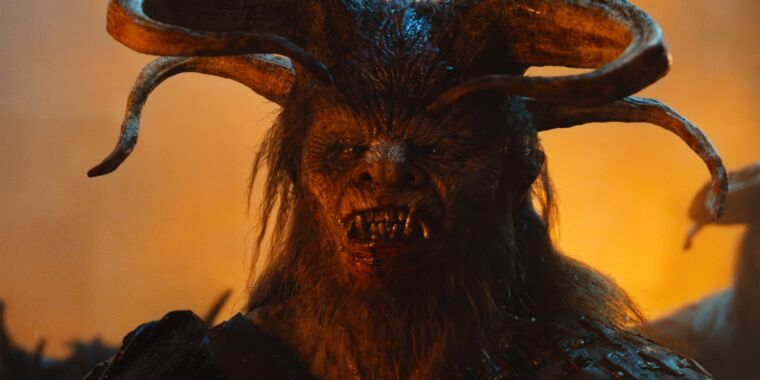
Young jumping spiders dangle by a thread through the night, in a box, in a lab. Every so often, their legs curl and their spinnerets twitch—and the retinas of their eyes, visible through their translucent exoskeletons, shift back and forth.
“What these spiders are doing seems to be resembling—very closely—REM sleep,” says Daniela Rössler, a behavioral ecologist at the University of Konstanz in Germany. During REM (which stands for rapid eye movement), a sleeping animal’s eyes dart about unpredictably, among other features.
In people, REM is when most dreaming happens, particularly the most vivid dreams. Which leads to an intriguing question. If spiders have REM sleep, might dreams also unfold in their poppy-seed-size brains?
Rössler and her colleagues reported on the retina-swiveling spiders in 2022. Training cameras on 34 spiders, they found that the creatures had brief REM-like spells about every 17 minutes. The eye-darting behavior was specific to these bouts: It didn’t happen at times in the night when the jumping spiders stirred, stretched, readjusted their silk lines or cleaned themselves with a brush of a leg.
Though the spiders are motionless in the run-up to these REM-like bouts, the team hasn’t yet proved that they are sleeping. But if it turns out that they are—and if what looks like REM really is REM—dreaming is a distinct possibility, Rössler says. She finds it easy to imagine that jumping spiders, as highly visual animals, might benefit from dreams as a way to process information they took in during the day.
Rössler isn’t the only researcher thinking about such questions in animals distantly removed from ourselves. Today, researchers are finding signs of REM sleep in a broader array of animals than ever before: in spiders, lizards, cuttlefish, zebrafish. The growing tally has some researchers wondering whether dreaming, a state once thought to be limited to human beings, is far more widespread than once thought.
REM sleep is generally characterized by a suite of features in addition to rapid eye movements: the temporary paralysis of skeletal muscles, periodic body twitches, and increases in brain activity, breathing, and heart rate. Observed in sleeping infants in 1953, REM was soon identified in other mammals such as cats, mice, horses, sheep, opossums, and armadillos.
Events in the brain during REM have been well-characterized, at least in humans. During non-REM periods, also known as quiet sleep, brain activity is synchronized. Neurons fire simultaneously and then go quiet, especially in the brain’s cortex, making swells of activity known as slow waves. During REM, by contrast, the brain displays bursts of electrical activity that are reminiscent of waking.
Even across mammals, REM sleep doesn’t all look the same. Marsupial mammals called echidnas show characteristics of REM and non-REM sleep at the same time. Reports on whales and dolphins suggest that they may not experience REM at all. Birds have REM sleep, which comes with twitching bills and wings and a loss of tone in the muscles that hold up their heads.
Still, researchers are starting to find similar sleep states across many branches of the animal tree of life.
In 2012, for example, researchers reported a sleep-like state in cuttlefish, as well as a curious, REM-like behavior during that state of putative sleep: Periodically, the animals would move their eyes rapidly, twitch their arms and alter the coloring of their bodies. During a fellowship at the Marine Biological Laboratory in Woods Hole, Massachusetts, behavioral biologist Teresa Iglesias investigated the phenomenon further, collecting terabytes of video of half a dozen cuttlefish.
All six showed bouts of REM-like activity that repeated roughly every 30 minutes: bursts of arm motions and eye movements during which their skin put on a show, jumping through a variety of colors and patterns. The creatures flashed camouflage signals and attention-grabbing ones, both of which are displayed during waking behaviors. Since the cephalopod’s brain directly controls this skin patterning, “that kind of suggests that the brain activity is going a bit wild,” says Iglesias, now at the Okinawa Institute of Science and Technology in Japan.
Researchers have since observed a similar state in octopuses. If octopuses and cuttlefish dream, “it just kind of blows down the walls of what we think about humanity being so special,” Iglesias says.
Researchers have also observed a REM-like stage in bearded dragons by recording signals from electrodes in their brains. And they have reported at least two sleep states in zebrafish based on the fishes’ brain signatures. In one of the states, neural activity synced up like it does in a non-REM stage of mammals. In another state, the fish showed neural activity reminiscent of a waking state, as happens in REM. (The fish didn’t show rapid eye movements.)
Observing multiple sleep stages in such an evolutionarily distant relative from ourselves, the authors suggested that different sleep types arose hundreds of millions of years ago. It’s now known that flies, too, may flit between two or more sleep states. Roundworms appear to have one sleep state only.








